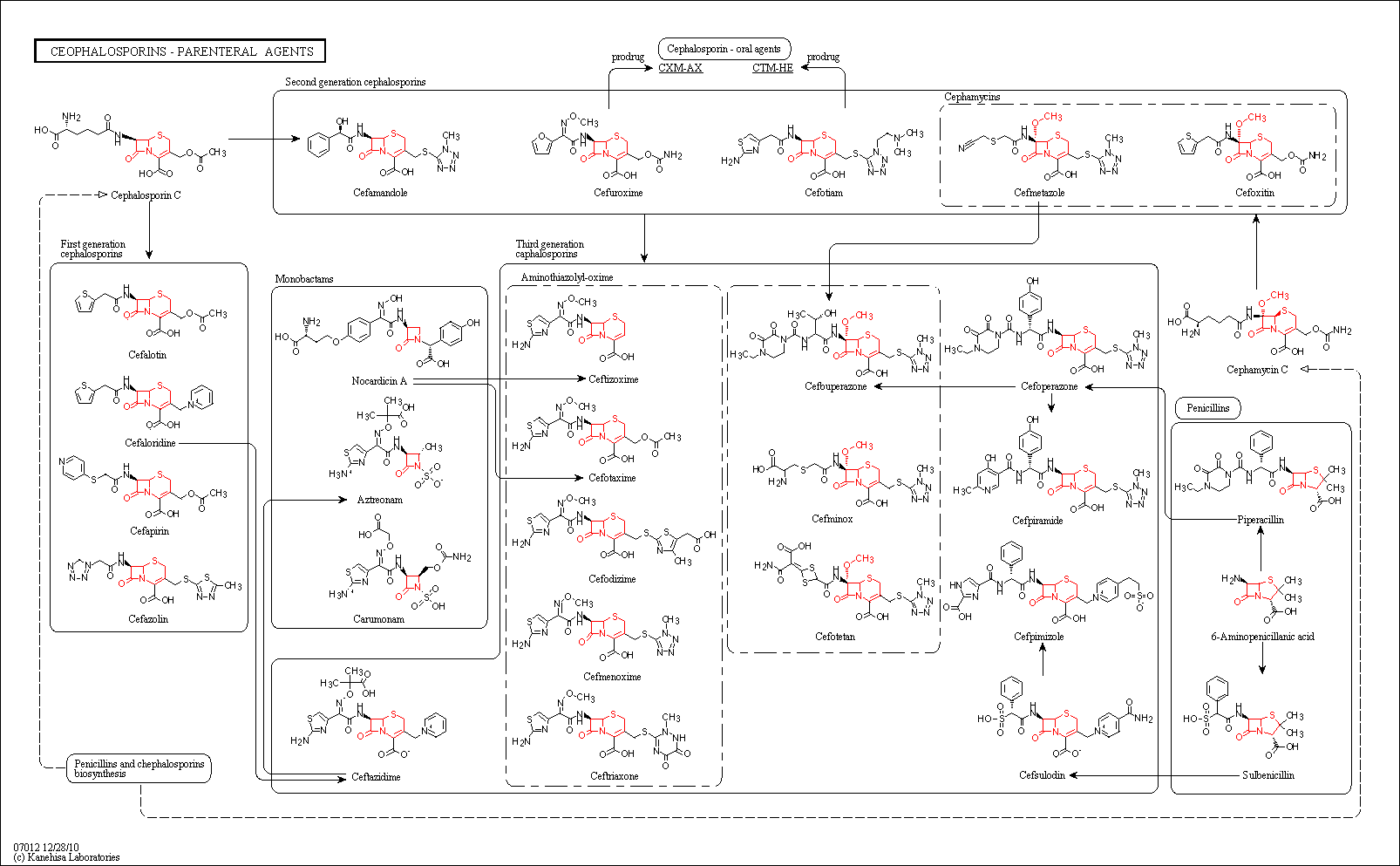Cephalosporins - Parenteral Agents
Description: Cephalosporins are a large class of widely used antibiotics. They are closely related, both structurally and pharmacologically, to penicillins. Together with the cephmycins, they make up a large subclass of beta-lactam (the name of the core structure) antibiotics known as the cephams.
These antibiotics were first isolated by Giuseppe Brotzu from the organism Cephalosporium acremonium, which he found in the sewers of Sardinia in 1948. Later, the molecule Cephalosporin C was isolated and is now used as the derivative for the chemical synthesis of other cephalosporin antibiotics.
These antibiotics work by disrupting the synthesis of this peptidoglycan layer of the bacterial cell wall. In the final step of the formation, normally transpeptidases bind to the ends of muropeptides (intermediates in the formation of peptidoglycan) in order to crosslink the peptidogylcan. Cephalosporins - as well as other beta-lactam antibiotics - act to competitively inhibit this crosslinking by mimicking the binding site on the muropeptide.

Related BMRB Molecules
For complete information about pathway, see KEGG [map07012]
